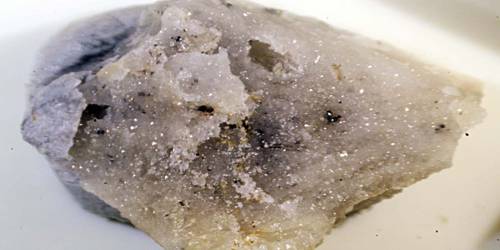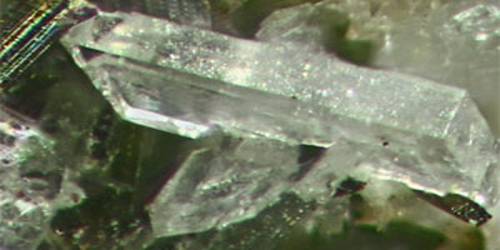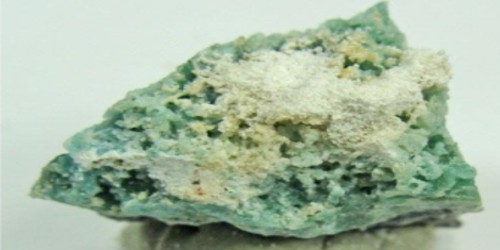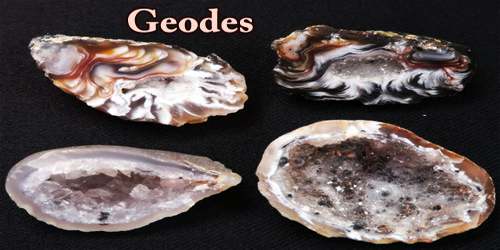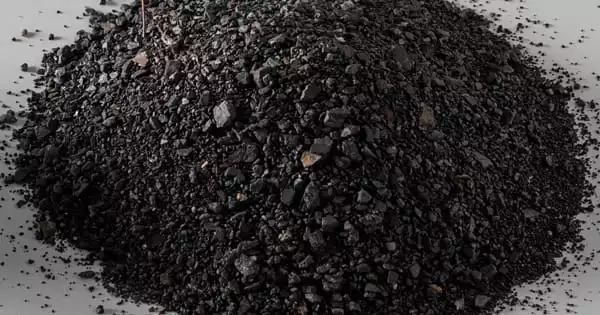Berryite is a mineral with the formula Pb3(Ag, Cu)5Bi7S16. It occurs as gray to blue-gray monoclinic prisms. It is opaque and has a metallic luster. It has a Mohs hardness of 3.5 and a specific gravity of 6.7.
It was named in honor of Professor Leonard Gascoigne Berry (1914–1982), Canadian Mineralogist, Queen’s University, Kingston, Ontario, Canada, who obtained the first X-ray powder pattern of the mineral.
General Information
- Formula: Pb3(Ag,Cu)5Bi7S16
- Colour: Bluish-grey, white, grey-white.
- Lustre: Metallic
- Hardness: 3½
- Specific Gravity: 6.7
- Crystal System: Monoclinic.
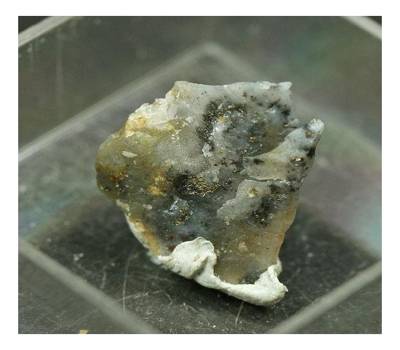
Properties
- Lustre: Metallic
- Transparency: Opaque
- Colour: Bluish-grey, white, grey-white.
- Hardness: 3½ on Mohs scale
- Hardness: VHN100=131 – 152 kg/mm2 – Vickers
- Cleavage: Poor/Indistinct
- Density: 6.7 g/cm3 (Measured) and 6.83 g/cm3 (Calculated)
Occurrence: In quartz veins with other sulfides and sulfosalts, and in siderite-rich cryolite (Ivigtut, Greenland).
It was first identified in 1965 using X-ray diffraction by mineralogist Leonard Gascoigne Berry (1914–1982). It is found in Park and San Juan counties in Colorado. It occurs in sulfide-bearing quartz veins in Colorado and with siderite-rich cryolite in Ivigtut, Greenland.
Information Source;
